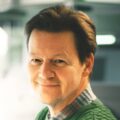If you are not an Insider like most of this magazine’s readers, you would likely nominate the 11th IHSG conference for the honorable price of being “This summer’s most geeky event imaginable”. I mean, how many on this planet would spend an entire week in June in one of France’ most beautiful cities (Angers) listening to oral presentations on the effect of rainfall during floral onset for the seed yield in alfalfa, or traverse through clover fields under the baking sun while discussing the use of cover crop or not under the establishment of a new clover variety?
However, as an insider I felt very privileged to participate in a conference where very important science met very practical seed production. DLF once had a sub-logo saying, “Seeds and Science” and so I may be environmentally damaged, but I can’t help being totally fascinated considering how much genetic information is packed into each of these minute shrines we call seeds — how much science they contain and how much science there is at stake in the interaction between this seed and the conditions that ensures proper growth and reproduction. This is what IHSG is about. It is about exploring and sharing that science, which makes herbage seed business possible, profitable, and an asset to the community.
So, I took up my seat with the rest of the 150 delegates and enjoyed listening to the investigations, which tried to unravel the reasons behind ten years of steady decline in alfalfa seed yield in France; I learned about the technological advancements in remote imagery for saving precious nitrogen in seed production; I realized that with the changing climates there may a greater future for tropical forage grasses such as Guinea-grass Megathyrsus maximus and Signal grass Uruchloa sub species in South Europe; I was amazed to see how three years of persistent questionnaire reporting among 400 white clover growers had formed the basis of an Integrated Pest Management system, which when followed leads to significantly higher seed yields.
During brakes and technical tours to breeding stations and seed growers’ demonstration fields I participated in the discussion on which measures can be taken to alleviate the challenges associated with ban on several important pesticides and the increasing fluctuations in weather extremes. Without these gatherings, without this concerted effort in translating science into practical solutions our efforts would be inferior and sporadic. With IHSG, how geeky it may be, we have a chance not only to keep but also enforce a European seed production of the highest standards for the benefits of future generations. If you missed the 11th IHSG, you don’t want to miss the 12th conference, which will be held in Tasmania, Australia.






